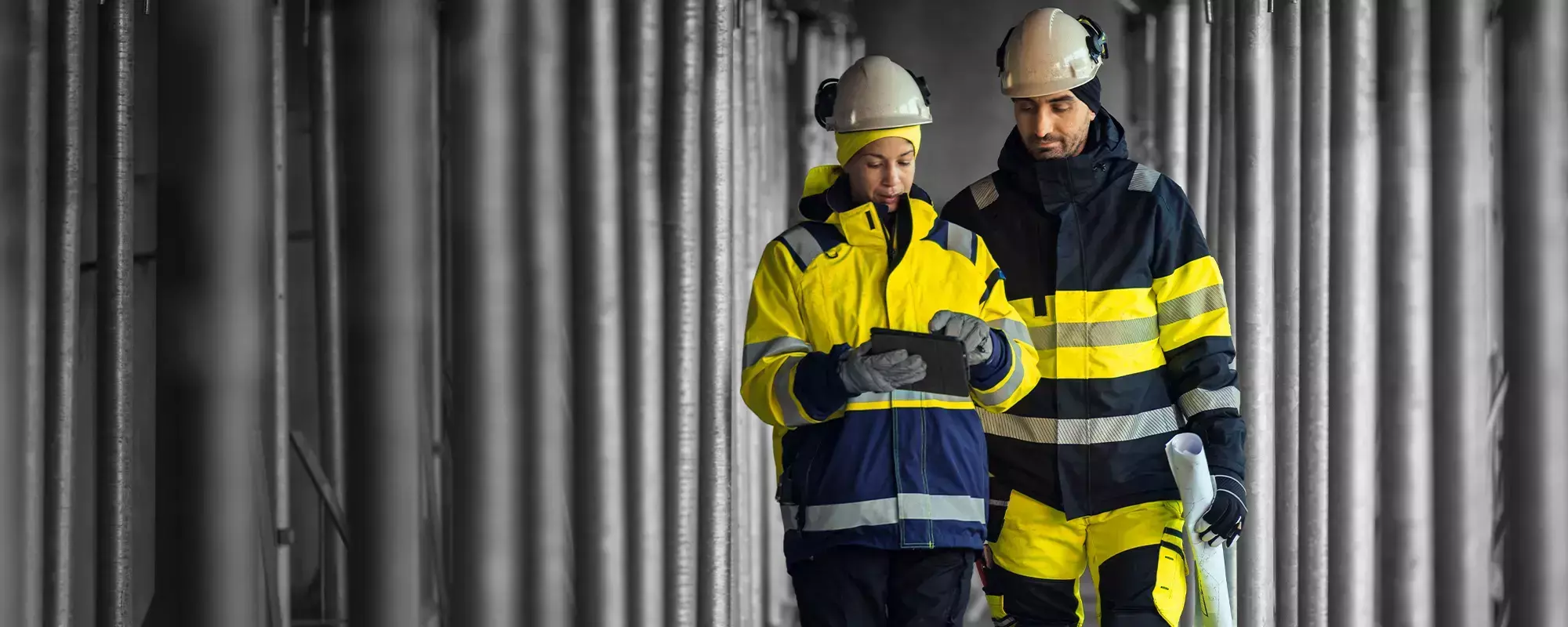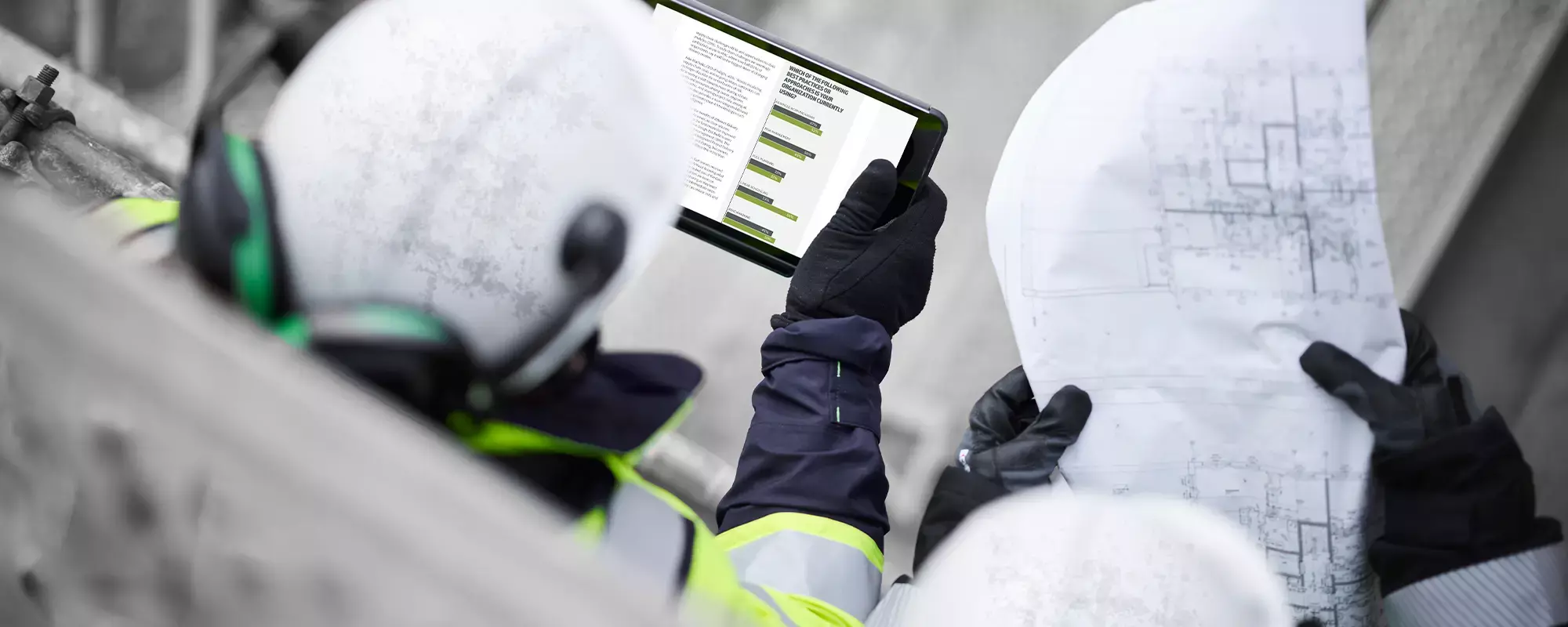Safety measures on the jobsite might be rather unconventional line items to check off on a standard construction punch list, especially since there’s likely a set protocol already in place for tracking these measures. But safety is a 24/7 proposition. So, having an extra set of “eyes” on jobsite hazards can benefit every project — and project team — throughout its life cycle.
How can you promote jobsite safety with a construction punch list?
Incorporate punch lists at the beginning of the project
Because they’ve traditionally been implemented near the end of a construction project, punch lists tend to result in a period of a flurry of activity to finish outstanding work — before liquidated damages become an issue. It’s during this race against time that safety protocols may be at higher risk of error. Why? One reason is that meeting the original completion deadline is paramount for contractors to receive their retainage payment. But it’s not necessary to trade accuracy for project deadlines.
The solution is to use construction punch lists at the beginning of the project with mobile-friendly documentation software and continue using them throughout the build. Known as rolling punch lists, they turn your lists into an ongoing quality control (QC) process rather than simply a defect-finding mission. This keeps your site crews from tackling a large backlog of major rework at project’s end, putting an undue burden on craftspeople that can lead to a higher likelihood for safety shortcuts.
How does it work? As defects are documented in real time, they can be assigned to the appropriate craftsperson or whole crew for immediate repair. This can dramatically shorten the tally of significant end-stage repairs to complete and reduce the injury rate that occurs during this phase.
Record any safety issues during the rolling punch list process
Whether you’re conducting rolling punch list inspections on a scheduled or ad hoc basis, this is the ideal opportunity to document any safety protocols not being adhered to or newly formed hazards within or around the jobsite. Sure, it may not be in the official job description of those conducting the walkthrough. But safety isn’t just within the purview of the safety manager; it’s everyone’s obligation.
Sometimes a safety issue — from a minor oversight to an outright violation — may be observed by pure happenstance during construction punch list inspections. These things can happen at any time, not conveniently before a formal safety inspection that would have otherwise caught it. Rather than expecting that someone will eventually discover and take responsibility for it (a dangerous assumption as it could prove to be too late), the person doing the inspection can take a proactive approach. In the same way you’d document structural or building system flaws, you can notate safety concerns. Instead of going into another app, though, simply photograph the issue and upload it through the mobile app software your company uses for its punch lists, add notes about the issue, and tag the safety manager or the appropriate subcontractor to notify them about the corrective action.
Update your actual punch list template to include safety line items
Why not make your construction punch list do double duty? The very structure of the punch list itself — a simple checklist — makes incorporating a few line items around witnessed personal safety protocol violations, structural weaknesses and environmental hazards that much easier. If you’re using documentation software with a mobile component, you can easily create a combination template or update an existing one.
A non-exhaustive, safety-informed construction punch list could include:
- Equipment damage or malfunction
- Personal safety measures violations (e.g., incorrect harnessing, lack of protective gear)
- Proper protocols not being followed
- Exposed or unsecured materials
- Physical hazards (e.g., tripping hazard)
- Witnessed injury
- Witnessed accident
Project owners and contractors alike are prioritizing using safety data for improved project outcomes. What could that look like in this situation? All this safety data recorded during construction punch list inspections, when added to that of the formal safety inspections, can further be used to develop improved protocols and create more specific training around material handling, equipment usage and personal safety measures.
None of this is meant to replace existing jobsite safety protocol adherence measures, but rather to enhance them. Because injury rates are higher in construction than in most other industries, any additional ways you can incorporate safety tracking into your process will help bring those injury incidents down, along with any other non-injury-related safety incidents and violations. The consequences of not making safety a top priority to track and enforce at all times are missed job milestones and/or completion dates, costly fines for violations, increases in worker compensation claims, injury-related time off and higher insurance rates, just to name a few.
That’s what makes punch list inspections the perfect companion process to increase focus on jobsite safety. To gain even more benefit from this safety + punch list combination approach, consider software like InEight Document that digitizes the construction punch list process. With photo and video uploading and immediate notification capabilities, safety issues can be resolved just as quickly — making for a safer jobsite for everyone during construction, and a safer structure to turn over to the owner at project’s end. Request an InEight demo today to get started.




